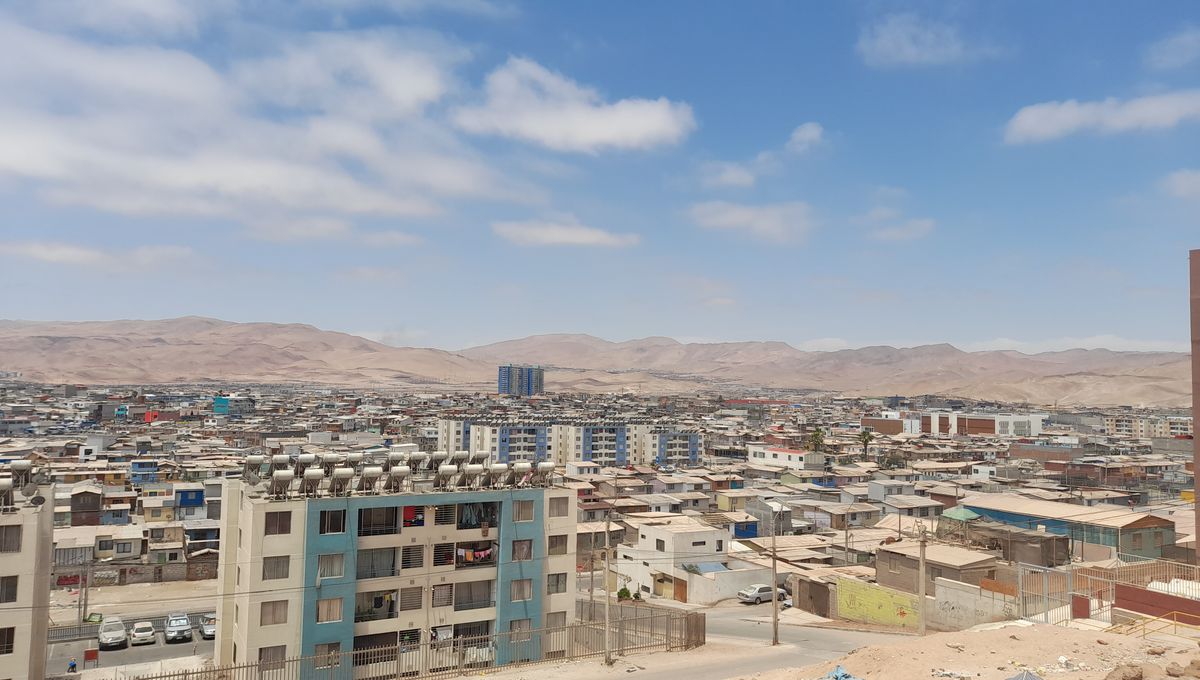
Scientists have proposed an unlikely solution to water scarcity in one of the driest places on the planet: fog. By harvesting moisture from the air, they argue, we could provide vulnerable communities in Chile’s Atacama desert with much-needed water.
ADVERTISEMENT GO AD FREE
The Atacama is the driest nonpolar desert – but not the driest place on Earth, that title belongs to somewhere you might not expect – receiving just 1 to 3 millimeters (0.04 to 0.1 inches) of precipitation per year in some places. That hasn’t stopped life from thriving there: hardy bacteria are known to inhabit the bone-dry, salty, and sulfate-rich soil, and plant life blooms, despite the hostility. But what about humans?
Believe it or not, people live there too, mostly in coastal towns and cities. Their main source of water comes from an underground aquifer located inland, at the foot of the Andes, which last recharged between 17,000 and 10,000 years ago when the desert still received some rainfall. It is now drying up.
In the new study, the team turned their attention to Alto Hospicio, a fast-growing municipality with a population of over 143,000. Around 10,000 people in the region live in informal settlements, the overwhelming majority of which are not connected to water distribution networks. Inhabitants here get their water via trucks or rely on punctures to the public network.
Their precarious situation leaves them vulnerable to water scarcity – but we may now have a solution in the humble form of fog. Fog harvesting – a technique that involves collecting and storing water in fog – could provide an untapped and inexpensive source of water for communities in the Atacama Desert, the researchers argue.
“This research represents a notable shift in the perception of fog water use – from a rural, rather small-scale solution to a practical water resource for cities,” said Dr Virginia Carter Gamberini, first co-author of the study, in a statement.
“The collection and use of water, especially from non-conventional sources such as fog water, represents a key opportunity to improve the quality of life of inhabitants.”
ADVERTISEMENT GO AD FREE
But just how do you “harvest” fog? The answer is a fine, moisture-catching mesh strung between two posts. As droplets build up on the mesh, they fall into a gutter and flow into water storage tanks.
Utilizing such a method in a 100 square kilometer (39 square mile) area surrounding Alto Hospicio could, the researchers demonstrate, generate between 0.2 and 5 liters of fog water per square meter each day. During the study’s peak – August and September of 2024 – this potential reached up to 10 liters per square meter and day, although it is confined to higher altitudes.
With treatment, this water could be used for drinking, but it could also have applications in agriculture or mining.
Based on an average annual water collection rate of 2.5 liters per square meter per day, the researchers estimate that 17,000 square meters (183,000 square feet) of mesh would be needed to meet the weekly water demand of 300,000 liters for the 10,301 people living in Alto Hospicio’s urban slums. Meanwhile, just 110 square meters (1,180 square feet) could meet the yearly demand for the irrigation of the city’s green spaces (100,000 liters).
ADVERTISEMENT GO AD FREE
“Our findings demonstrate that fog can serve as a complementary urban water supply in drylands where climate change exacerbates water shortages,” Carter added. However, fog harvesting should not be targeted as the sole solution to water scarcity, but as part of a broader approach, the team cautions.
For the strategy to work would require optimal geographic and atmospheric conditions. “Key prerequisites include fog density, suitable wind patterns, and well-oriented elevated landforms,” first co-author Nathalie Verbrugghe explained, adding that seasonal variability in fog would also need to be accounted for – in Alto Hospicio, the fog season is from May to October. They would also need to evaluate the quality of the harvested water and consider what treatment it may need to make it safe to drink.
Nonetheless, its promise has the team feeling hopeful.
“We hope to encourage policymakers to integrate this renewable source into national water strategies,” concluded Carter. “This could enhance urban resilience to climate change and rapid urbanization while improving access to clean water.”
ADVERTISEMENT GO AD FREE
The study is published in Frontiers in Environmental Science.
Source Link: Scientists Work Out How To Extract Water From The Driest Hot Desert On Earth